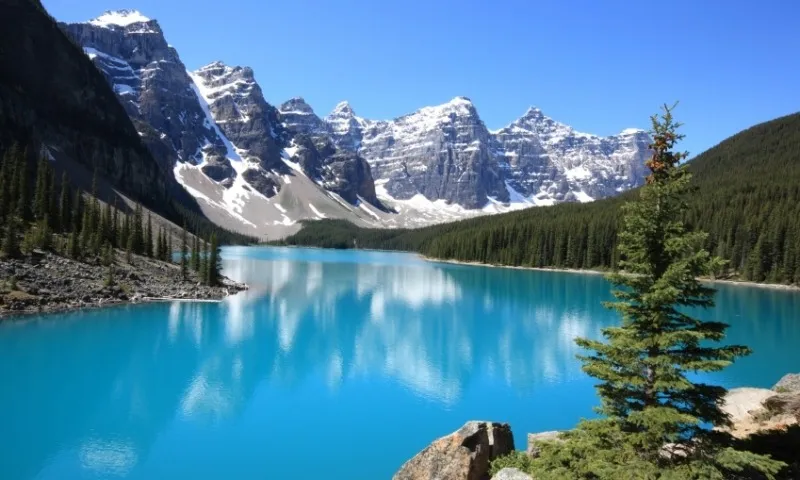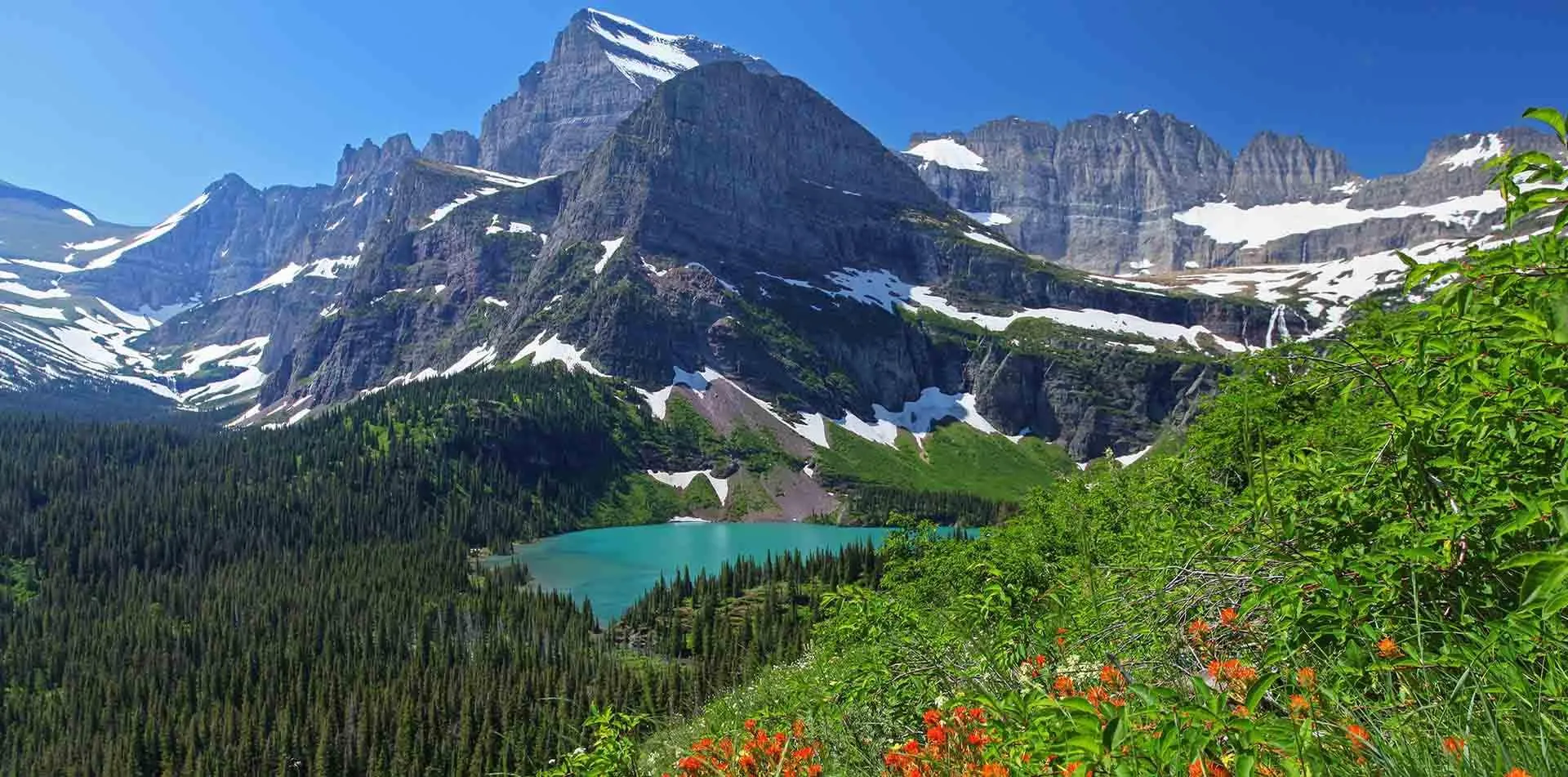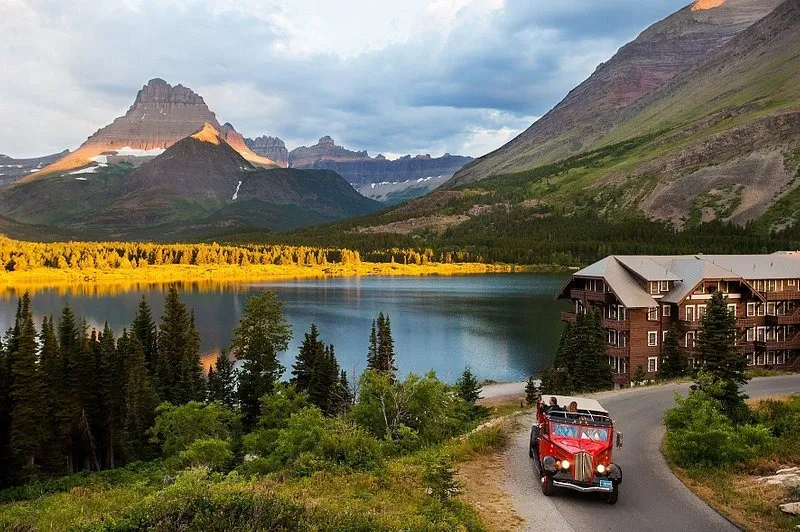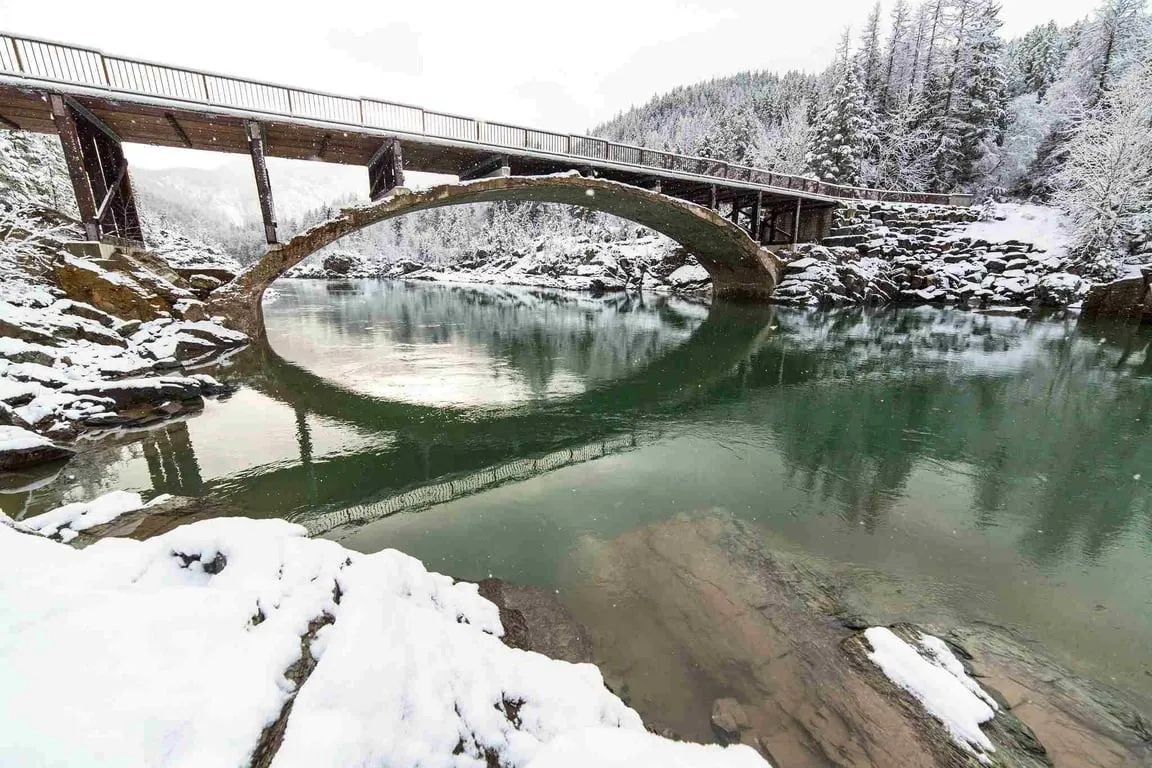The best time to visit Glacier National Park in Montana allow travelers to experience the breathtaking beauty of Big Sky Country, a place many consider one of the most stunning destinations on Earth. Given the vast and magnificent landscapes our planet offers, that’s a remarkable statement.
Montana boasts sweeping grasslands, rugged mountain peaks, diverse wildlife, pristine blue lakes, and sections of the historic Great Northern Railroad. With such natural splendor, it’s no wonder this state is home to some of the finest national parks in the U.S. Among them, standing out as a true gem, is Glacier National Park, a destination that continues to captivate adventurers and nature lovers alike. Let’s explore with National Park Shops!
When is the best time to visit Glacier National Park?
The best time to visit Glacier National Park depend on what you’re looking for, as each season offers its own unique charm. Winter blankets the landscape in snow, creating a peaceful atmosphere perfect for those seeking solitude. While some roads are closed, visitors can enjoy enchanting snowy trails (snowshoes recommended) and excellent hotel discounts, though many lodges and most campgrounds shut down for the season.
Spring brings the park to life with blooming wildflowers and increased wildlife activity, while summer is ideal for thrill-seekers eager to go rafting or take a refreshing dip in the warmer lakes.
The park reaches its peak visitation during the height of summer. To manage the influx of travelers, a reservation system is in place for vehicles from May 26 to September 10, between 6 AM and 3 PM. This is largely due to the popularity of the breathtaking 50-mile Going-to-the-Sun Road, which stretches from west to east. Visitors should anticipate heavy traffic and potential delays in finding parking during these peak months.

A Seasonal Guide to Glacier National Park
Glacier National Park is a destination that transforms with the seasons, offering breathtaking scenery and unique experiences year-round. To help you plan the perfect trip, here’s a seasonal guide to Glacier National Park.
Visiting Glacier in Spring (March-May)
The best time to visit Glacier National Park for solitude is during spring when the park remains quiet and uncrowded. While much of the U.S. welcomes warmer weather, Glacier still holds onto winter conditions well into May, with chilly temperatures and lingering snow.
Higher-elevation hiking trails typically remain snow-covered until early July, but lower-elevation paths and those along the park’s outskirts are usually clear by mid-April. If you’re comfortable with cooler conditions, spring offers the rare chance to explore peaceful, crowd-free trails before the summer rush. However, visitor services are limited, so proper preparation is essential.
Another best time to visit Glacier National Park is in spring if you enjoy cycling, as sections of the Going-to-the-Sun Road are plowed and open for bikers starting in May. With the snowmelt in full swing, waterfalls become especially powerful, creating breathtaking roadside views of rushing cascades throughout the park.
>> Read More: Distance From Glacier National Park To Yellowstone

Visiting Glacier in Summer (June-August)
The best time to visit Glacier National Park for warm-weather adventures is summer, particularly in August, when the hills and valleys burst into color with wildflower blooms. By late July, all hiking trails are free of snow, and the iconic Going-to-the-Sun Road is fully open, along with visitor centers, lodges, and campgrounds, making it an ideal time for exploration.
With long daylight hours stretching into the evening and temperatures hovering around the low 80s, summer offers ample opportunities to experience everything the park has to offer. A refreshing swim in one of Glacier’s pristine lakes is a must, and Lake McDonald stands out as a favorite for swimming, kayaking, and paddleboarding, thanks to its accessibility and comfortable water temperatures during the warmer months.
Another best time to visit Glacier National Park is when you’re seeking a truly exhilarating experience – like taking a dip in Iceberg Lake. Even in the peak of summer, floating chunks of ice remain in the water, offering a dramatic and unforgettable backdrop for both adventure and photography.

Visiting Glacier in Fall (September-November)
The best time to visit Glacier National Park for stunning autumn scenery is mid-September, when the trees and surrounding foliage transform into brilliant shades of red, orange, and yellow.
By early October, the summer crowds start to dwindle, creating a quieter atmosphere where wildlife becomes more active. This season is particularly eventful as deer, elk, and moose enter their mating period, while bears intensify their foraging to prepare for hibernation.
As fall progresses, access to certain areas begins to change, with the Going-to-the-Sun Road either partially or fully closing by October, marking the transition into Glacier’s colder months.
>> Read More: Glacier National Park Bear Attacks: Survival Story

Visiting Glacier in Winter (December-February)
The best time to visit Glacier National Park for a true winter adventure is during the colder months when the landscape is covered in deep snow. While the snowfall creates a stunning winter wonderland, unpredictable weather conditions can make travel challenging, and certain roads may become completely impassable.
Visitors should be well-prepared and self-sufficient, as park services remain closed until May. However, for those willing to embrace the season, several trails offer excellent opportunities for snowshoeing and skiing, and a portion of the Apgar Campground remains open for winter camping, providing a unique way to experience Glacier’s serene, snow-covered beauty.

>> Here is related information that may interest you: The 7 Best Thermal Jackets For Outdoor Activities (Tested)
Best time to visit Glacier National Park to avoid crowds
The best time to visit Glacier National Park for full access to facilities and attractions is summer when warm weather draws the largest number of visitors. However, if you prefer to avoid crowds and take advantage of lower entrance fees, consider exploring the park during its off-season, which runs from October to April.
Winter sees the fewest visitors, with December, January, and February typically welcoming fewer than 50,000 people combined, drastically lower than the 700,000 visitors in July. During this time, you’ll have the park nearly to yourself, with opportunities for unique activities like cross-country skiing along the famous Going-to-the-Sun Road. But keep in mind that Montana’s winter conditions can be harsh, and many park services shut down for the season, making careful preparation essential.
For those seeking a quieter experience without extreme winter weather, another best time to visit Glacier National Park is in spring or fall. While some seasonal closures remain in place, such as restricted vehicle access on certain roads beginning in October and hiking trails remaining closed until ice fully melts, these shoulder seasons provide breathtaking scenery, especially around the park’s perimeter. According to the park’s website, trails on the edges tend to become snow-free sooner than those near the Continental Divide or in the park’s interior.
>> Read More: The 11 Best National Parks for Families: Perfect for Kids
When is the worst time to visit Glacier National Park?
Winter is the quietest season in Glacier, but it comes with significant challenges. During these months, all in-park lodging and most visitor services are closed by the National Park Service. Heavy snowfall between December and March blankets the park in several feet of snow, making many roads impassable. Those who want to experience Glacier’s serene yet harsh winter landscape must be well-prepared with proper gear and, ideally, have some background in snow sports.
In contrast, summer is the most accessible season for visitors of all skill levels. However, the early and late summer months tend to offer a more enjoyable experience than the peak season of July and August. During the height of summer, large crowds and heavy traffic on Going-to-the-Sun Road can lead to congestion, making it more difficult to fully appreciate the park’s stunning scenery.
Best times to visit Glacier for Good Weather
The weather in Glacier National Park is highly unpredictable due to its mountainous, northern location. Conditions can quickly shift from sunshine to rain, often within minutes. For those hoping to experience the park with sunny skies and warm, hike-friendly weather, the period between early July and late September is ideal, as most areas are accessible and temperatures are mild.
The western half of the park generally experiences warmer and wetter weather. In West Glacier, Montana, which lies on the southwest edge of the park, daytime temperatures typically reach the 80s in July and August, with cooler temperatures in the 60s and 70s during June and September. On the other hand, if you’re traveling east of the Continental Divide or venturing above 5,000 feet in elevation, temperatures can be 10 to 15 degrees cooler than in West Glacier.
No matter when you visit, it’s important to be prepared for the park’s frequent weather changes. Bring layers, including a rain jacket and hat, to stay comfortable in varying conditions.

Best things to do in Glacier National Park
Glacier National Park offers a wealth of breathtaking activities for every type of visitor. If you’re looking for an unforgettable experience, here are some of the park’s top attractions:
Hiking: With over 700 miles of trails, there’s no shortage of places to explore. The Going-to-the-Sun Road is a must-see, and hiking the Highline Trail will reward you with spectacular views of Bearhat Mountain. For a more moderate hike, check out the Hidden Lake Overlook. Avalanche Lake, a 4.5-mile round-trip trail, is another favorite, surrounded by dramatic cliffs and waterfalls.
Scenic Drives: If you’d rather not hike, take a drive along the Going-to-the-Sun Road. This 50-mile route is a feast for the eyes, with alpine peaks, glaciers, and deep valleys. Be sure to stop at Logan Pass for a brief rest and some of the most photogenic spots.
Wildlife Watching: Keep your binoculars handy. Glacier is home to grizzly bears, mountain goats, bighorn sheep, and possibly even moose. For the best chances of spotting wildlife, visit Many Glacier or Two Medicine early in the morning or late in the afternoon.
Boating or Kayaking: Explore the park’s stunning lakes by renting a kayak or joining a guided boat tour on Lake McDonald or Swiftcurrent Lake. The crystal-clear waters and majestic peaks offer an unforgettable backdrop, and many tours include insightful ranger-led history talks.
Glacier Viewing: Although the glaciers are rapidly shrinking, they are still one of the park’s main draws. Bearhat Mountain and Jackson Glacier are accessible by trails or from scenic viewpoints along the road. If you want to see them before they disappear, now is the best time to visit Glacier National Park.
Camping: For a true outdoor adventure, camp at Apgar or Fish Creek Campgrounds. If you’re seeking more solitude, consider backcountry camping with a permit for a more rugged, isolated experience.
Photography: Whether it’s sunrise at St. Mary Lake or sunset over Two Medicine Valley, Glacier offers endless opportunities for stunning photographs. The wildflower blooms in summer and the snow-capped peaks in fall make for particularly breathtaking shots.
How long should you spend at Glacier National Park?
No matter if you have just a single day or an entire month to explore, Glacier National Park offers a wide variety of activities for those who love the outdoors. With over 700 miles of hiking trails and countless other adventures such as fishing, kayaking, rafting, and stargazing, there’s no shortage of ways to stay active. For those seeking the best time to visit Glacier National Park, the summer months provide optimal conditions for these outdoor experiences.
Conclusion
The best time to visit Glacier National Park ultimately depends on what kind of experience you’re seeking. If you prefer mild weather, stunning wildflower blooms, and access to most of the park’s trails, summer (late June to early September) is ideal. However, if you want to experience the park’s serene beauty without the crowds, early fall (September to October) offers cooler temperatures and the chance to see the fall foliage. For winter sports enthusiasts, the off-season offers snow-covered peaks and a quieter, more peaceful atmosphere. No matter when you decide to visit, Glacier National Park’s awe-inspiring landscapes are sure to leave a lasting impression. Plan your trip accordingly and make the most of your time in this majestic park!
Read More:

